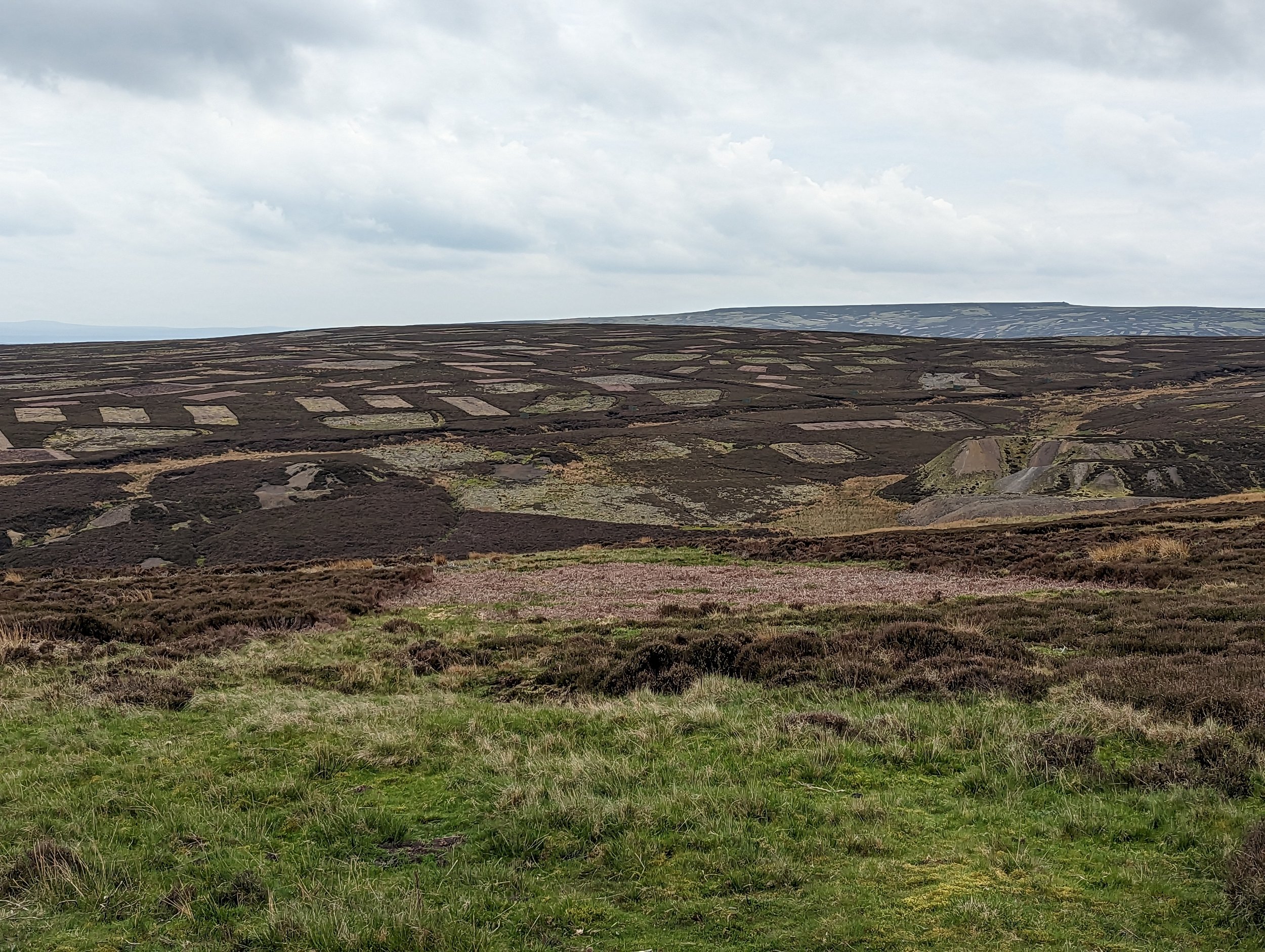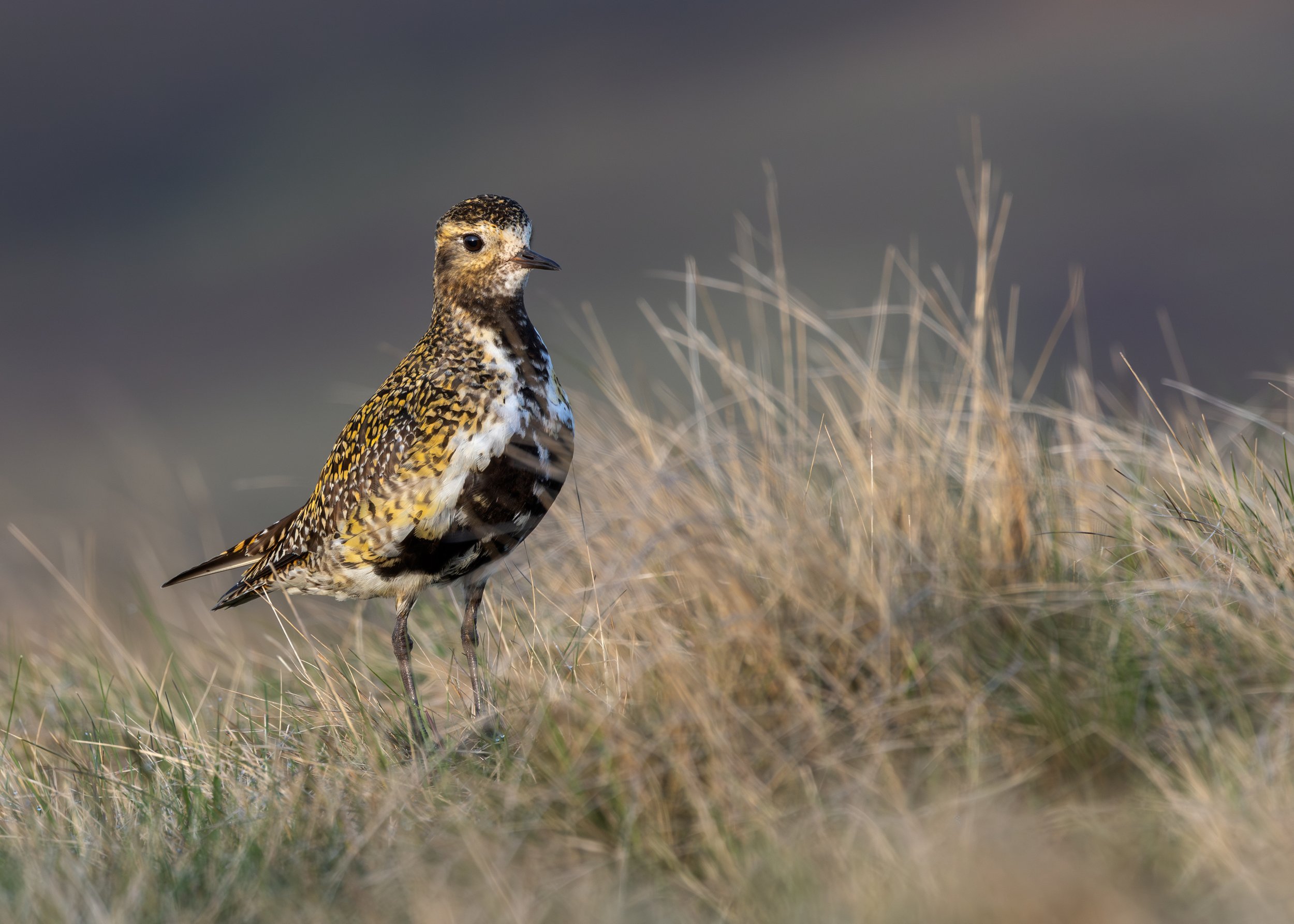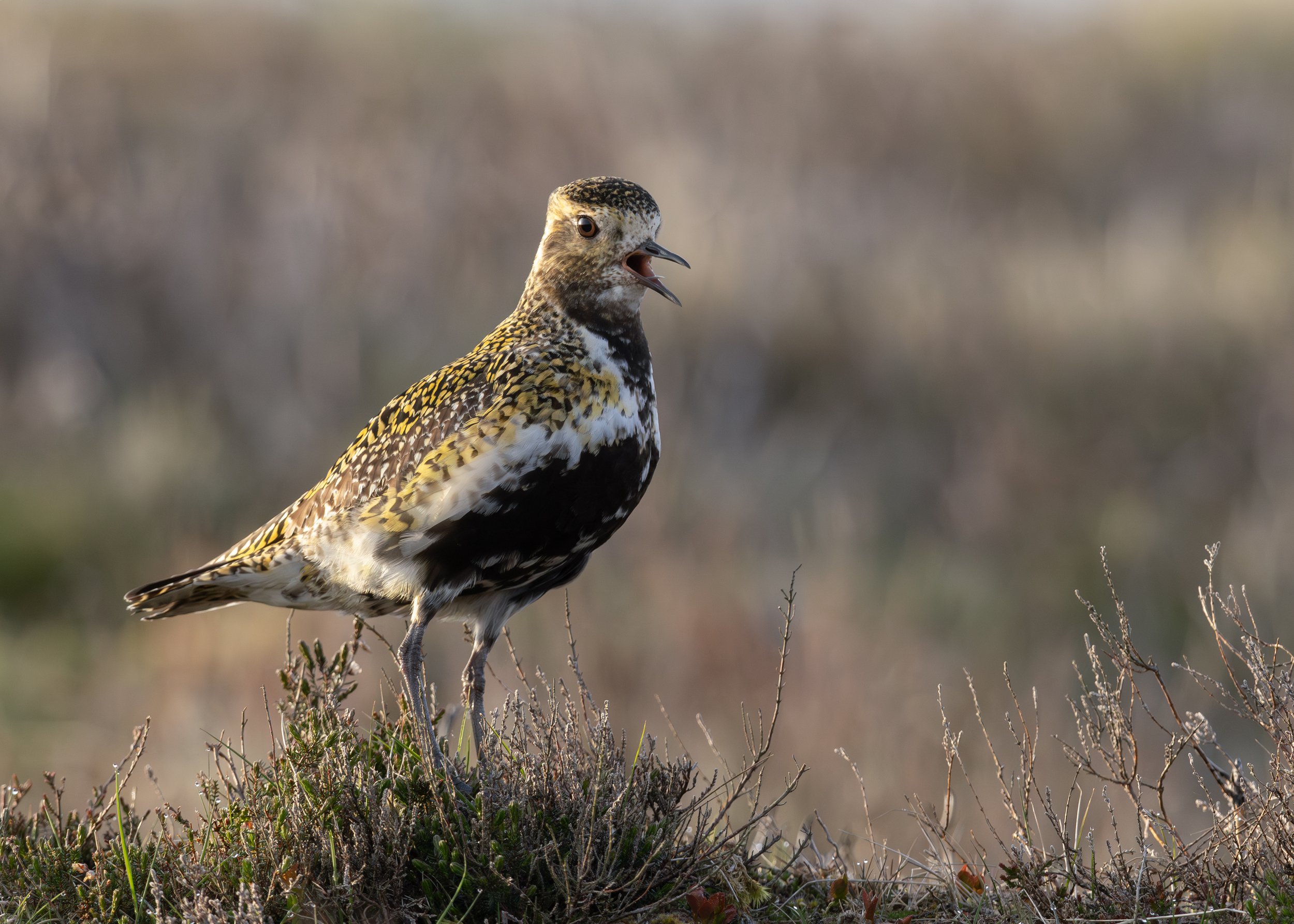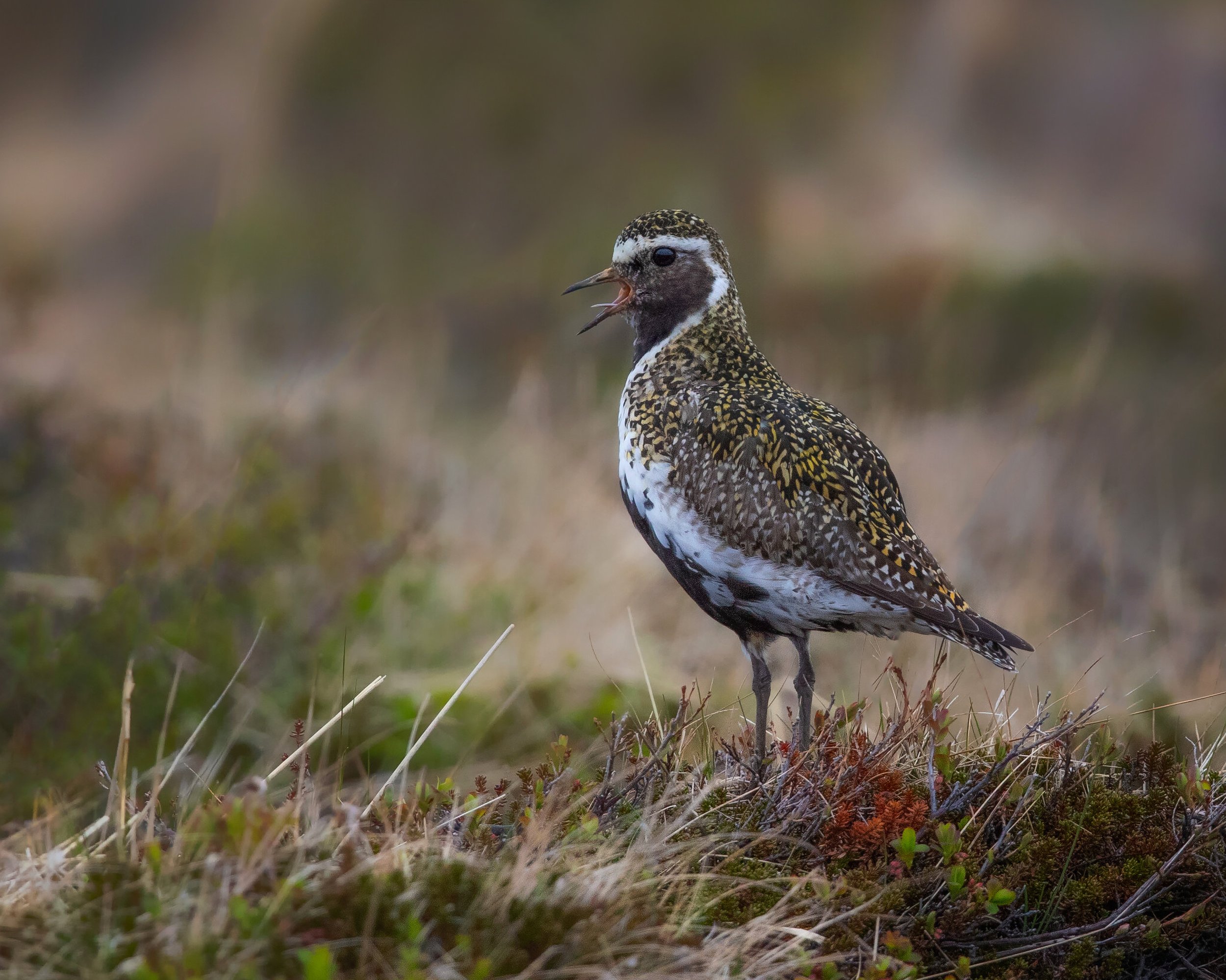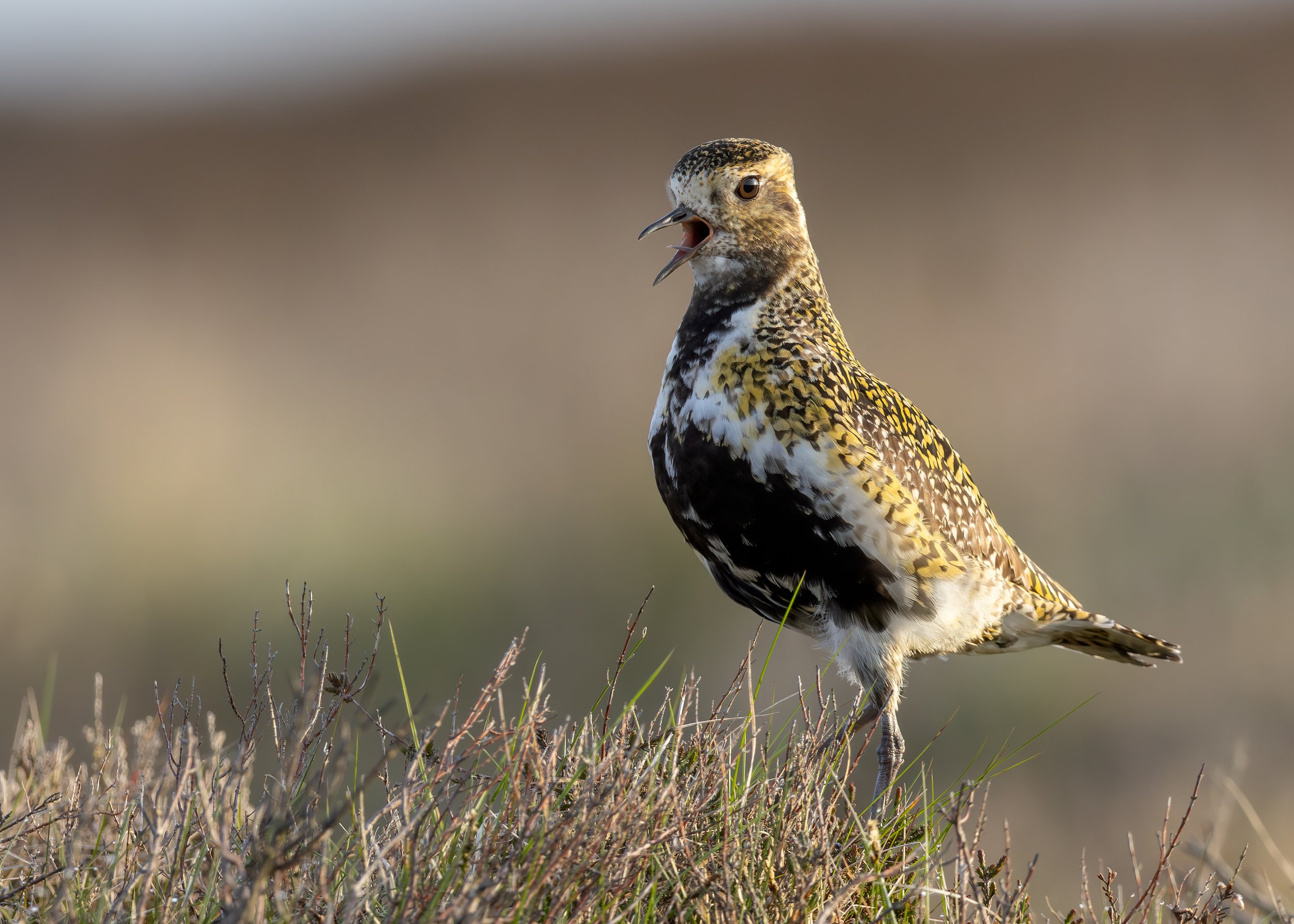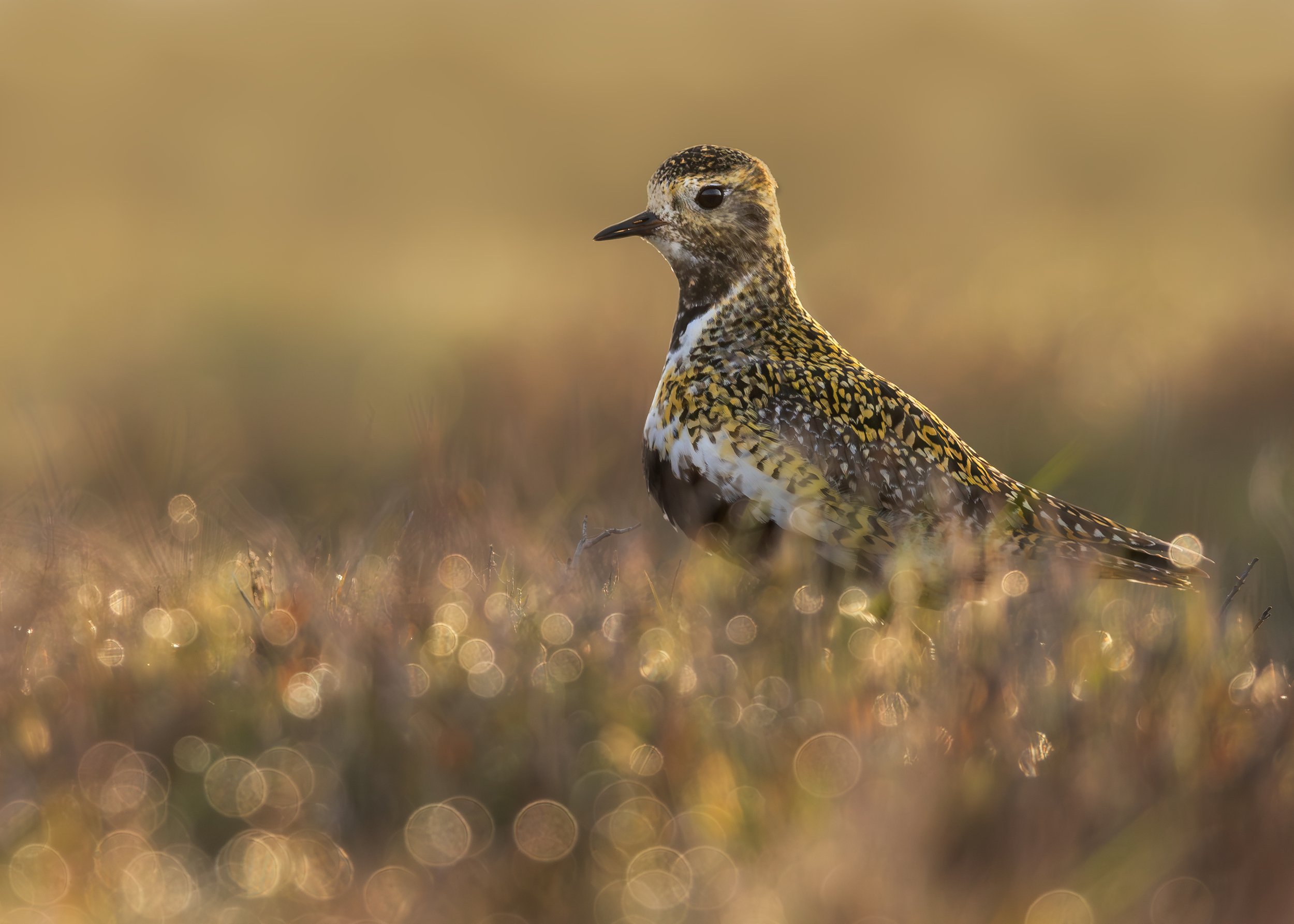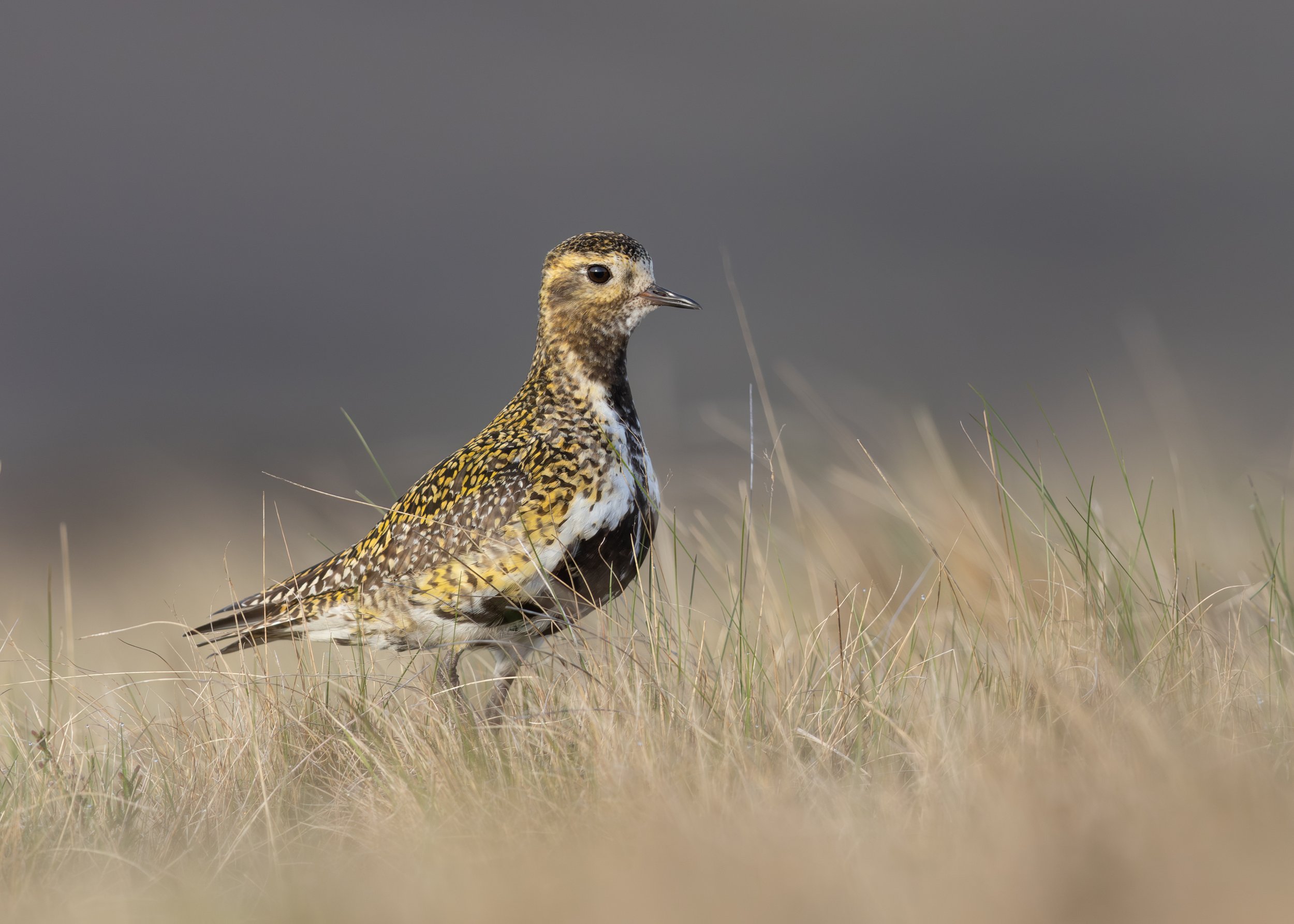Photographing Golden Plover on the North Pennine Moors
The moors of the North Pennines are crucial for breeding birds like the Golden Plover, Curlew, and Lapwings in the UK. These birds rely on the moors as a safe place to build their nests, raise their young, and complete their life cycles. The open spaces, diverse vegetation, and wet areas of the moors provide ideal habitats for these birds to thrive. Preserving the moors is vital for the conservation of these species and the overall health of the ecosystem. By protecting these precious landscapes, we ensure a future where these birds can continue to breed and contribute to the rich birdlife of the UK.
My target species for this trip was the Golden Plover. With its stunning plumage and intricate aerial displays, they find solace in the solitude of the moors during the breeding season. Here, they create their nests on the ground, carefully hidden amidst the heather and grasses. The moors provide the perfect blend of open spaces for their captivating courtship flights and ample foraging opportunities for their young.
Spotting the Golden Plover on the moor can be quite a challenge. These elusive birds are masters of camouflage, blending seamlessly with the heather-covered landscape. More often than not, it's their distinctive calls that give away their presence. As you traverse the moorland, the haunting calls of the Golden Plover resonate in the air, guiding you towards their hidden whereabouts.
Calling Golden Plover
Distinguishing between the male and female Golden Plovers is a fascinating aspect of observing these birds on the moor. The plumage of the male and female displays distinct differences. During the breeding season, the male Golden Plovers showcase a striking transformation. Their upperparts take on a stunning golden hue, glistening under the sunlight, earning them their name. The feathers on their bellies become jet black, creating a sharp contrast against the radiant gold. In contrast, the female Golden Plovers exhibit a more subdued appearance throughout the year. Their plumage is predominantly brown with mottled patterns, providing excellent camouflage against the moorland backdrop.
Male Golden Plover with it’s distinctive breeding plumage
Female Golden Plover in summer Plumage
When it comes to photographing Golden Plover, one thing I've learned, is that getting up close and personal with them requires some clever field craft.
One of my go-to techniques is using a LensCoat throwover cover. This tool acts as a disguise, helping me blend seamlessly into the moorland surroundings and avoiding any unnecessary disturbance to the Plovers. It allows me to approach these elusive birds without startling them, creating the perfect opportunity for those magical frame filling photography moments.
Being in place at the crack of dawn is an absolute must for this adventure. The early morning light casts a warm and gentle glow, illuminating the moors in a way that adds an magical touch to the photographs. Its also the best time for bird photography.
Once I arrive, I take a moment to absorb the beauty that surrounds me. The vast expanse of heather-covered terrain stretches out as far as the eye can see, it's a serene and wild landscape, perfectly suited for these incredible birds.
For the first little while, I spend some time monitoring the birds, watching where they fly, hang out and potential photo opportunities. These moments of observation provide valuable insights into their behaviour, enabling me to anticipate their next move and capture those decisive moments..
Photographing Golden Plovers and indeed other wildlife is a chance for me to immerse myself in the beauty of the natural world, and capture moments that take me away when times get tough. Nature can be a wonderful reset button.
So, if you're ever in the mood for an adventure that combines the deep appreciation for wildlife and nature, grab your camera, head outside and explore the many wonderful places often on your doorstep. I can certainly recommend the North Pennine Moors for creating memories that will last a lifetime.
Lenscoat Cover
If you enjoyed this content, p[ease leave it a like and a comment. It’s always good to hear from you and I always reply. You can comment as a guest. All you have to do is enter your name and post as a guest. Thanks !!

